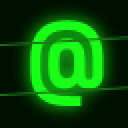
‘@Play‘ is a frequently-appearing column which discusses the history, present, and future of the roguelike dungeon exploring genre.
Back in the GameSetWatch era, I focused more on a general kind of audience for @Play. No, really! I notice that I’ve gotten a fair bit more detailed so far in the Set Side B era. That’s especially the case this time, which is a dive into the history of Angband. But there’s a purpose to this: after knowing where Angband’s been, it’ll help us when, next time, we finally look at its huge number of variants. That should be a lot of fun, and I’m looking forward to it. I hope it’ll make up for all the time I had to spend building this one.
Angband has a long and somewhat convoluted history. There aren’t many open source games with its longevity. It’s managed to keep going by changing ownership somewhat regularly, with each maintainer adding their own stamp to its play.
The Release section of the current Angband homepage rephial.org goes into exacting detail over what was introduced when, but it’s a lot to sift through, and in terms of volume most changes are just bugfixes.
I have gone through all the pages and tried to render down the essence of each change, and what effect it had upon Angband. In this article, we follow along with the various changes that have been made since its origin, and in the end try to note the best version to play, for people interested (or not) in its various aspects.
Our previous articles on Angband are this general introduction, and this description of its features and early going.
AnteAngband
Some of this will be familiar to people who have been reading @Play on Angband so far, so I’ll keep it brief. MORIA was created by Robert Koeneke in 1983, and may be the first true “roguelike” that wasn’t Rogue itself.
Moria was written in Pascal, a fine language that, sadly, isn’t nearly as popular as C. UMORIA (5/3/1987) is a reimplementation of Moria in C. It was updated until July 7, 1994, with one last gasp on 10/13/2008 by a different developer.
ANGBAND was based on UMoria 5.2.1, and is where our story really begins.
Other variants of Moria include Morgul (1993), PC Moria (unknown years), and VMS Moria (1983-1985).
Early History

Full resolution version
Angband 1.0 (1990): The first version of Angband was derived from UMoria by Alex Cutler and Andy Astrand. My indications are that Angband was largely a bigger version of Moria back then: 100 levels instead of 50, beat up Sauron and Morgoth at the end instead of a balrog. This version probably doesn’t survive, and doesn’t seem to have been widely distributed outside the University of Warwick.
What The Frog?
Angband 2.4.frogknows (April 11, 1993): This version was called (right on its title screen) “2.4.frogknows,” was produced by Steve Marsh and Geoff Hill after Angband’s creators graduated, and was the first version with a wide release. This version put a definite stamp on the game, and founded aspects of what many consider iconic about Angband. Amazingly, binary and source versions of frogknows are available from the current-day Angband Home Site.
How does it differ from UMoria?
- Added more Tolkien, D&D and Rolemaster monsters
- More object types, including rods, which don’t have limited charges, but instead have a timeout between uses
- More races
- Special dungeon rooms
- Monsters can be generated in groups
- Monsters have more spells and abilities
- Special monsters based on defeated players (“ghosts”) can appear in the dungeon and attack you
- Treasure pits, a predecessor of vaults, appear. These are large rooms with lots of treasure but also out-of-depth monsters
- Artifacts and level feelings are added
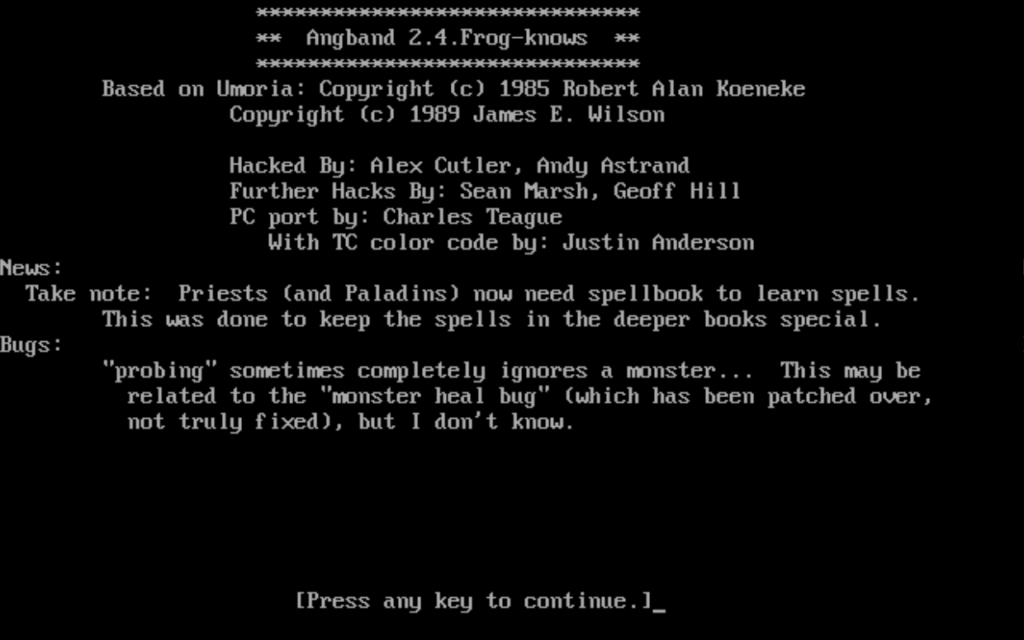
frogknows got ported to classic Macintosh, Atari ST, and Amiga. The CRPG Addict played this version of Angband and reported on the experience on his blog.
It helps, when giving dates, to give some idea of what else was going on in the world at the time. In the same year as frogknows, Bill Clinton was inaugurated as U.S. President, and child sexual abuse allegations were made against Michael Jackson. It was the 16-bit era in console video gaming. Secret of Mana came out for the SNES. Arcades saw the release of Mortal Kombat II and Super Street Fighter II. Among roguelikes, the NetHack DevTeam would release 3.1.0, the beginning of modern NetHack, but they hadn’t yet gotten to the venerable 3.1.3 version.
If you’re only used to 4.2.4, there are some specific things to be aware of. Mages are much more fragile starting out in older versions, with very slow spell point regeneration, while warriors can be played in a much more direct, hacky-smacky style. It you get stuck on a dungeon level, there’s probably a secret door you didn’t find; use the ‘s’ key in corridors and along walls to search for them. You must remember to wield torches to use them, you don’t start with anything equipped. Artifacts and ego items look just like normal items until identified. You don’t find stacks of useful potions and scrolls at once, but have to find across them one at a time.
PC Angband
Seemingly on the same day as the release of frogknows, Charles Teague (who helped with frogknows) released PC Angband 1.0.
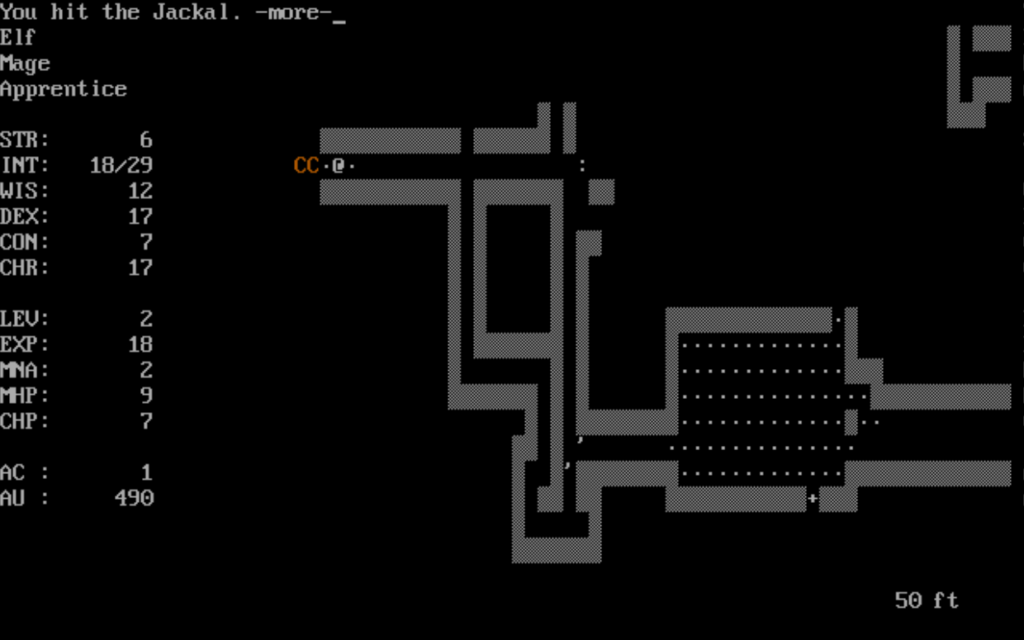
PC Angband went on its own for awhile. In the year 1993: April 20: 1.1; May 20: 1.2. August 18: 1.3; August 28: 1.3.1; it switched hands to Charges Teague. Then, March 7 1994: 1.4; and then, by Phil Yellott, on February 18 1995: 1.4.1b. After that, the line seems to have been merged back into mainline Angband.
Most versions of Angband before 2.8.0 are lost, and those that survive are usually only available in source form, but 1.2, 1.3, and 1.4 of the the PC Angband line survive and are playable in DOSbox. 1.0 and 1.1 also survive, but their closeness to frogknows means that the Angband site links them from its page.
PC Angband 1.2 (5/20/1993): Players could look at monsters to determine how wounded they are, and a stat autoroller was added.
PC Angband 1.3, 1.3.1 (8/28/1993): Targeting was added, allowing players to launch missiles and magic in arbitrary directions, not just in the orthogonal and diagonal ones. (You still can’t do this in NetHack, since it would materially affect other aspects of the game.) And players could gain more than one level at a time.
1.3.1 is an auspicious release, as the base of Angband’s first variants. One of these is Angband–, which seems to be lost, but would serve as the foundation of ZAngband, a mega-variant that itself saw a lot of iteration. It would inspire CthAngband, ToME, and Hengband, all variants that continue to see a lot of interest even now. Hengband is a Japanese variant with several notable children itself, and ToME has been rewritten several times, and now is basically its own separate, full-fledged game. You can even get it on Steam. We’ll talk more about variants, a huge topic, next time.
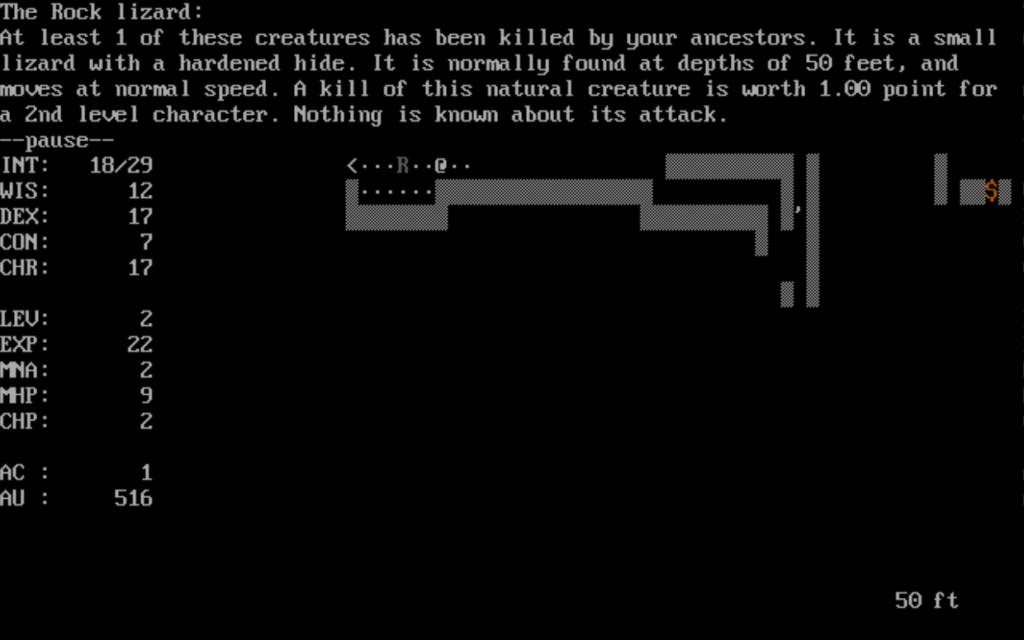
Mainline Angband, 2.X
Angband 2.5.0 (12/8/1993): Charles Swiger took over as maintainer. Versions from this to 2.5.9 were released with many technical and miscellaneous changes that I won’t bore you with. Targeting was ported into mainline Angband with 2.5.6.
2.5.8 is the only of these versions that is available on the Angband home site, and even that only in the form of source code.
PC Angband 1.4 (3/7/1994): The last version of PC Angband, and Charles Teague’s last contribution to the game. Many of its changes were merged with the core game. It added a new speed system, and other miscellaneous adjustments.
Angband 2.6.0 (9/4/1994): More miscellaneous changes over three versions, and the end of Charles Swiger’s tenure. 2.6.1 and 2.6.2 are available as source code.
The Macintosh port of 2.6.1 marked a notable addition to the roster of people who have worked on Angband….
Angband 2.7.0 (1/14/1995): Ah! With this version, Angband legend Ben Harrison began his work. The current Angband homesite calls it the beginning of the Second Age of Angband.
Ben Harrison cleaned up the code greatly, almost rewriting it, and fixed lots of bugs, resulting in the 2.8 line being the foundation for many variants. A lot of Angband’s reputation for spawning variants is due to this version, both directly and by its successors. Ben Harrison also founded a notable Angband Home Page on the World Wide Web, that survives today. (The successor to it, thangorodrim.net, has not been so lucky.) And, Ben Harrison invented the Angband Borg, in which one’s computer plays Angband itself, learning about the game as it goes.
2.7.2 added the Scroll of *Identify* to the game, which offers complete information on an artifact’s properties. (Angband loves emphasizing words with asterisks.)
2.7.4 is notable because it’s one of the few versions of Angband from back then that’s still available in compiled form, and downloadable from the Angband site. Its Windows version doesn’t work well for me, producing a garbled display on Windows 10. The DOS version appears to be salvaged from someone’s playfield; it has a valid save file for a character named Whopper, a Human Paladin, who is in the middle of exploring the dungeon, and carries the artifact “Sting.”
2.7.5 rewrote dungeon generation. 2.7.6 added a health bar for monsters. And 2.7.7. removed player ghosts “temporarily,” but they have yet to return even today. This is the version that rephial.org says added Angband’s famed monster memory, a set of spoilers that the game creates and maintains as you play, collecting all the information that your characters have learned on their adventures. However, some form of this extends back as far as PC Angband 1.0.
2.8.0 (10/12/1996): 2.8.1 expanded dungeon spaces so more than one item can fit in a space. Up until then, any dungeon space could only hold one object on the ground. This sometimes caused enemies to leave less treasure than they would otherwise have if they were being fought in a corridor, since there simply wouldn’t be enough room for it all. (The Mystery Dungeon games abide by this restriction, where it adds some unexpected wrinkles to its gameplay.) It also made it so any player race can try to play as any class, although some are probably not good ideas with the stats the game assigns to them.
The 2.8 series on Windows contains rudimentary graphics, but several of its releases don’t like to work on current Windows.
2.8.2 removed the prompt for the number of items to drop, sell, or destroy at once. Instead, players could specify a count before the command, similar to Rogue and NetHack’s repeat systems. After vocal outcry from some players, 2.8.3 added it right back again.
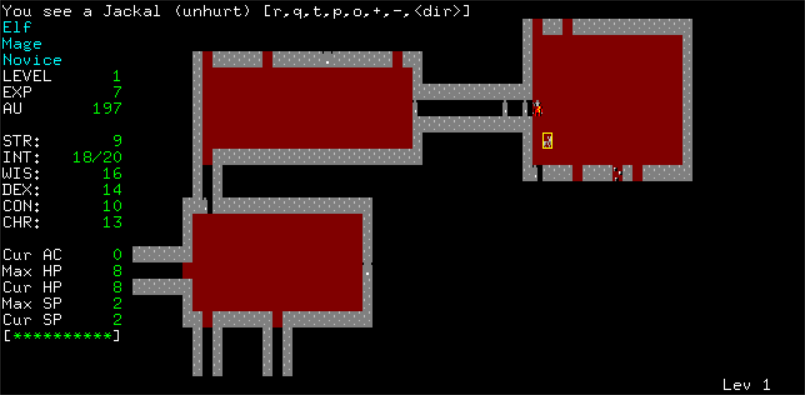
2.8.3 was Harrison’s last official version, although he’d release a version of a prospective 2.8.5 for testing. This version seems to be the first version with support for Allegro tile-based graphics on Windows, but it’s not enabled in the supplied binary. It contains the font-based graphics of the other 2.8 versions, but they have to be enabled in ANGBAND.INI, by setting the variable Graphics therein to 1. Although the tiles are tiny and hard to make out, it’s recommended to play this way, as the terminal graphics are messed up on current Windows. You can somewhat get around this by use the Look command (‘l’) to identify characters in sight. This version does not have compiled DOS binaries on the Angband home site. This (the garbled terminal graphics and Graphics=1 in ANGBAND.INI) is also true of several of its successors.
2.9.0 (4/11/2000): A new Angband for the year 2000. Robert Ruhlman took over the reins of Angband with this version and created the thangorodrim.net website (Wayback link). 2.9 added birth options (see the previous article for more on those), one of them being a way to enforce the “ironman” playstyle, where characters are disallowed from ever using upstairs. Other birth options remove shops or artifacts from the game, or else replace the built-in set of artifacts with randomly-generated replacements. Font graphics can be enabled in ANGBAND.INI on Windows, but are on by default on DOS.
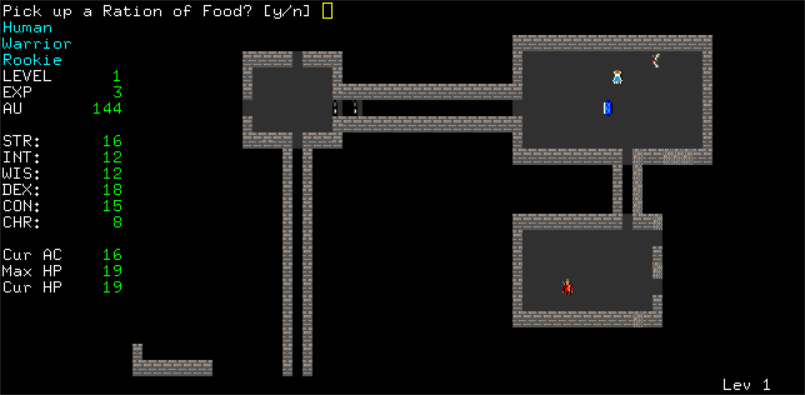
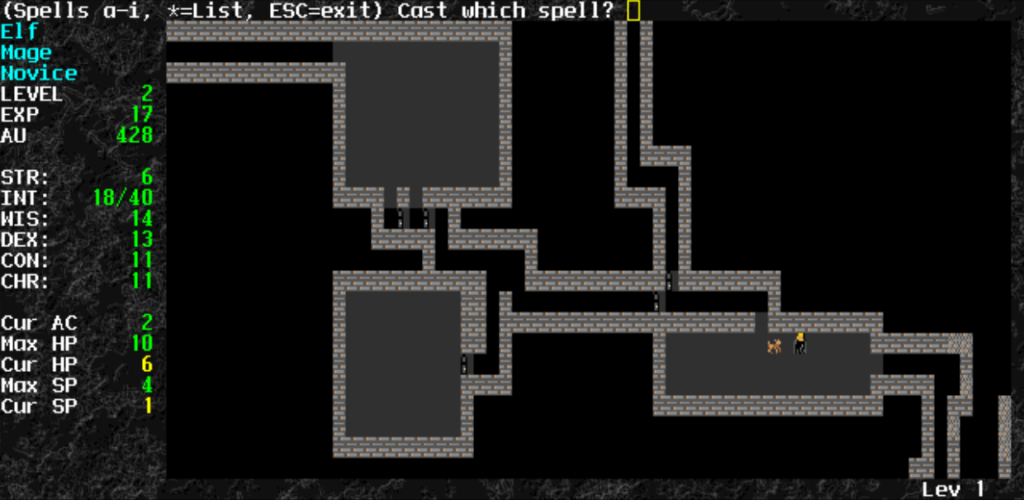
Angband 3.X
3.0.0 (3/30/2002): A notable change with this version was the addition of Lua scripting to the game. You might think that sounds like it’d be a great idea, after all lots of other games have used Lua, but it actually didn’t see much use, and would be removed from the code with 3.0.8.
It’s minor from a play standpoint, but 3.0.2 removed the term “Genocide” from the game, in order to disassociate a mere computer pastime from real-life horrors. The effect was renamed to Banishment, although this meant that the pre-existing Priest spell Banishment had to itself be renamed to Banish Evil to avoid nominal confusion.
3.0.4 marked two significant changes. With this version junk items, which were included as dungeon flavor but served no real game purpose, were no longer generated in the dungeon. And this was the version to, finally, remove haggling over prices to buy or sell from shops, which I have to say, after experiencing Moria, is probably my own personal favorite change. (Up until this point, the game had already been shortening haggling a lot.)
Robert Ruhlmann stopped maintaining Angband with 3.0.6 (6/8/2005). It’s also the last version supplied with DOS support.
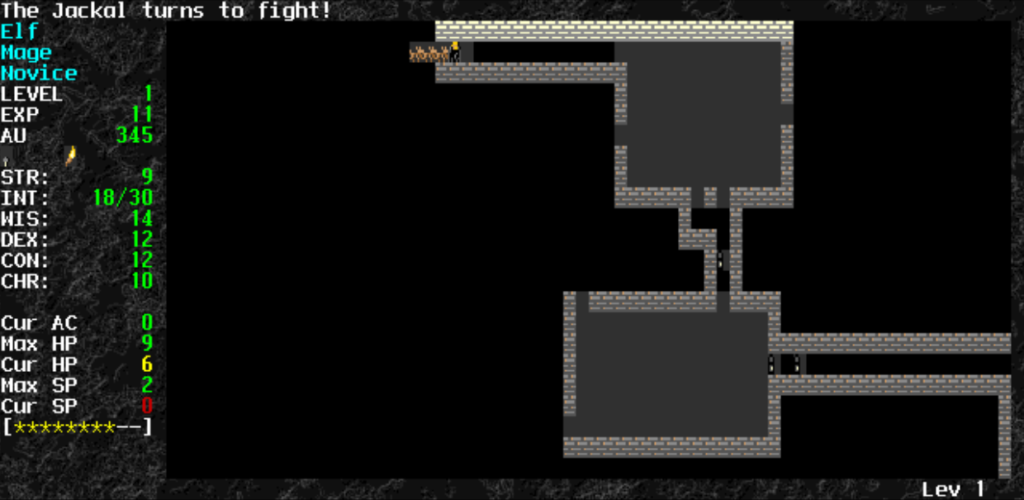
3.0.8p1 (prerelease, 6/24/2007): Anna Sidwell takes the fiery spikéd torch from Robert Ruhlmann, and removes Lua support. This is the first version to have item “squelching,” allowing the player to set the game to automatically ignore items they aren’t interested in. Mouse support is added, and the code cleaned up again.
3.1.0 (beta, 1/24/2009): This version marked fairly large changes to gameplay. Monsters here ceased to drop so many items, potions began tending to appear in stacks, and healing became proportional to wounds taken. (I’m not quite sure what that means.) A “bad” class of items from previous versions, that reduce a stat and provide no upside, was replaced with alternate items that lower one stat but raise another. Gold generation was toned down in the later dungeon, and traps start out only generating relative safe types, with the worse ones saved for getting progressively deeper in the dungeon.
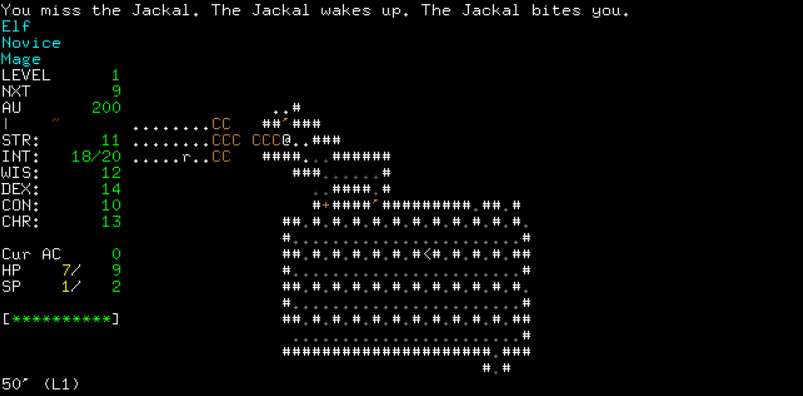
Graphics here, by default, are TTY-based, but can be switch to tiled graphics from the Options menu fairly easily. If the window is too small for you (easily possible), the size of the screen can be adjusted in steps from the Window menu.
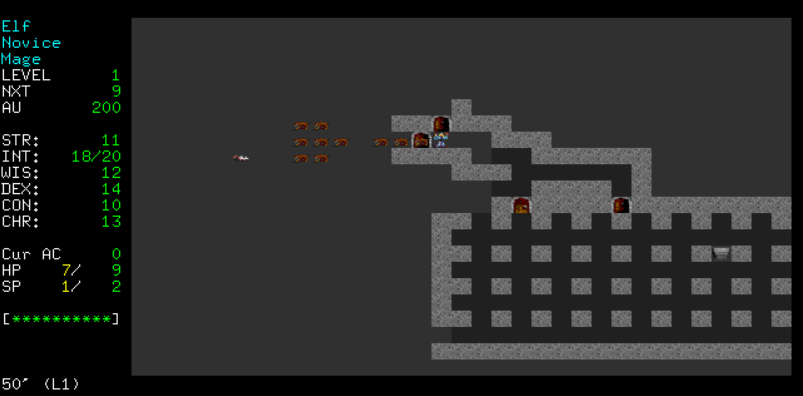
Note: from here, Angband comes with multiple tilesets, so how the game looks depends on the tiles selected. If you have the time/energy/artistic skill you could make your own.
3.1.1 (beta, 7/29/2009): Another auspicious moment for the game of Angband. For many years Angband had suffered, after being worked on for so long and by so many hands, of not having a clear line of copyright for all its code, which prevented it from going full GPL. While everyone generally agreed that the game should have fully open source and no one was really against it, the community’s inability to contact everyone who contributed to the source code meant they couldn’t fully relicense it. With this version, the last of these rights issues was finally cleared up, and Angband became available under a dual license, both GPL and its own Angband source license.
3.1.2v2 is credited to the Angband Development Team, I think signalling them taking over from Anna Sidwell.
3.2.0 (12/24/2010): Armor Class, the game statistic indicating how protected a character is from harm, was changed to make heavy armor more worth it relative to their weight. The speed system was changed again. Element resistances was extended to cover carried items. With this version, all artifacts became immediately recognizable: items with names are instantly known, although your character still won’t know what their abilities are until discovered in play. Until that point, you would eventually get a good feeling about a specific item if it was an unrecognized artifact that had been carried for awhile.
Starting in this version, I notice, you can resize the window to get more of a view of the world.

3.3.0 (7/31/2011): Dungeon generation got another long-overdue overhaul. New cavern and labyrinth special level types were introduced. Level feelings, a part of the game going back to frogknows, were redesigned, separating the danger level of a level from the treasures on it. Resistances were revamped. This version made the spiking of doors, in order to slow down pursuing monsters, a feature that had long been in the game and derived from tactics in classic D&D, more effective.
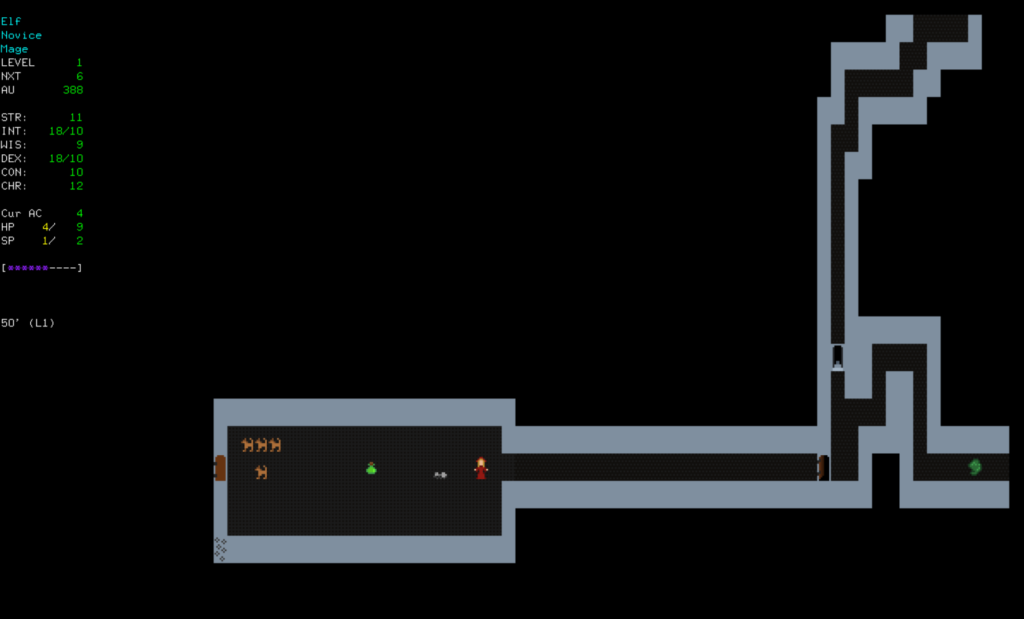
3.4.0 (9/14/2012): Development pace slowed for a bit here. Various changes over the years had resulted in Angband becoming easier, and this version attempt to restore some of its classic difficulty.
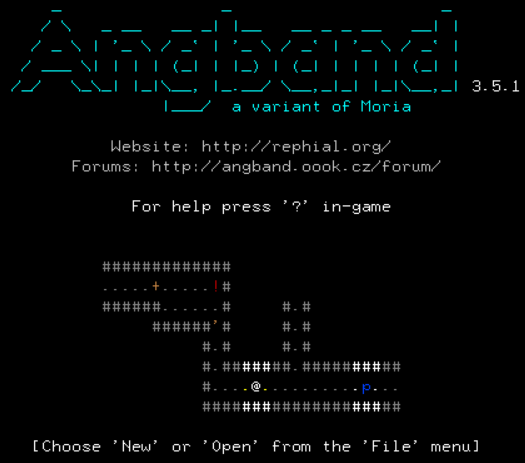
3.5.0 (12/24/2013): Changed the game a fair bit. Charisma, often the dump stat in D&D-derived games, was removed entirely. Item generation was rebalanced, ego items redistributed by level, and shops by default no longer buy items from the player; you can instead donate an item to a shop to be identified or recharged. Money in dungeons was made more plentiful to compensate. (Shops will buy items again, and less money will be generated, if enabled with a birth option.) Random monster generation was toned down, and continuing the trend towards removing bad items, Scrolls of Curse Armor and Curse Weapon were removed. And with this version, door spiking was removed entirely, along with jammed doors and bashing them down. I guess people didn’t like it as much as it was thought they would.
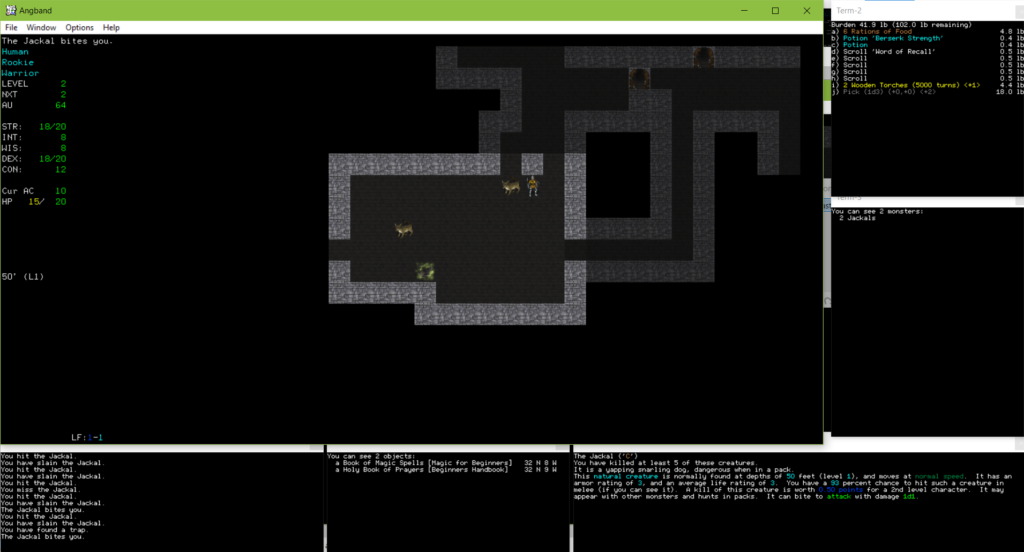
By this point Angband on Windows had come to default to offering the multi-headed display. (One of the Ben Harrison released versions also turned it on by default, I forget which one.) It also offers current-day Angband’s choices for tile size. At a glance, it looks a lot like the 4.0 series.
Modern Angband (4.X)
4.0.0 (6/29/2015): Nick McConnell takes over maintaining Angband. A new rewriting of the code begins, with the intent of not making game changes until it is finished.
4.1.0 (6/25/2017): Big changes are made to the game after extensive forum discussion. I described many of these aspects in more detail last time. Active searching (with the ‘s’ key) is removed entirely after 24 years; stepping next to a secret door now always reveals it immediately. Identification of equipment properties and curses takes on its current rune-based form, and classic roguelike “sticky” curses are removed entirely. All potions, scrolls, and mushrooms are immediately identified on first use, and wands, staves, and rods usually identify when used, unless they only work by affecting monsters and none are present when tried. Conversely however, Scrolls of Identify and *Identify* are now gone, replaced with Scrolls of Identify Rune. More level generation types are added, including a “Moria level” in homage to the original game. Status ailments that could be inflicted by monsters were made more interesting.
4.1.1 added a birth option to make dungeon levels persistent, not being regenerated when left and returned to. It’s still in as an experimental feature today.
4.2.0 (8/17/2019): As of this writing, it’s the current major release of Angband. (The newest minor version. 4.2.4, was released 2/22/2022.) This version revamped the magic system, adding two more types to make for four major varieties, and added druids and necromancers that specialize in them. The number of spellbooks was reduced so players don’t have to lug as many around. Shapechanging is added for players and monsters. Many new mechanics are added to the game with this version.
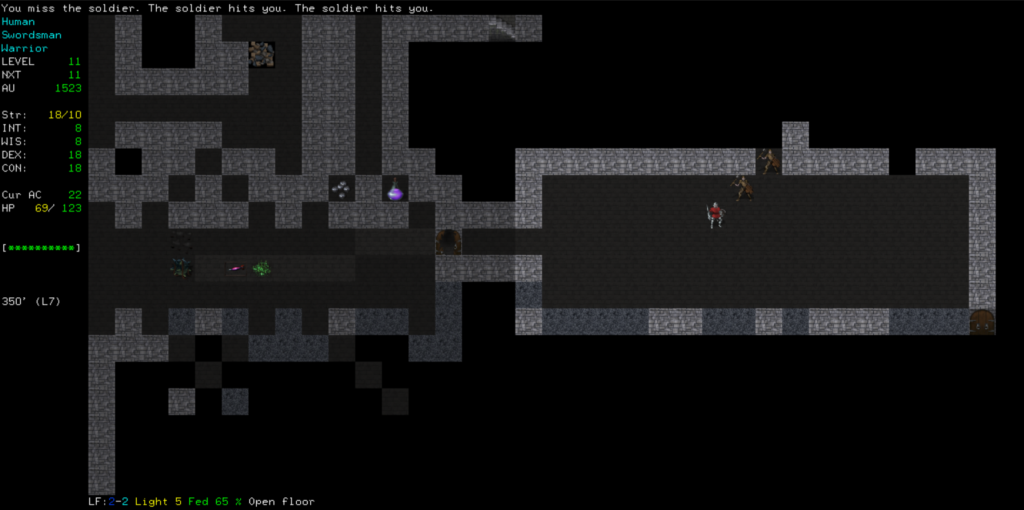
What Flavor Of Doom Is Right For You?
Some of these versions of Angband are still available to download, so you can play the one that’s in the most accord with your personal preferences. Over the years, some features have been toned down or removed entirely, and others introduced and given prominence. Generally speaking, later versions of Angband are easier than earlier ones, and also put more of the focus on combat than dungeon exploration, but this not a universal trend.
- If you want an experience as close to Moria, and Rogue, as possible, you’ll want to seek out 2.4.frogknows. You’ll get an authentic, but sometimes annoying, game.
- 2.7.5 removed player ghosts. It also added, or at least improved, the monster memory. Memory is a great help, over many games, towards recognizing which monsters are the most dangerous and why. (The full history of the monster ability recall function will probably have to wait for another time.) 2.7.6 is the first version after this point that survives.
- For graphics, 2.7.6 and successive versions have tile graphics if you change Graphics=0 to Graphics=1 in ANGBAND.INI, which will also ungarble the console on modern Windows. For Windows tile graphics, version 2.8.3 is likely the earliest version with Allegro support, but you’ll have to build it yourself.
- 2.9.0 added birth options, letting you customize the game more to your liking.
- 3.0.0 added Lua scripting, which might be interesting to modders.
- 3.0.2 added item squelching, helping streamline the exploration of the dungeon.
- 3.0.4 is when haggling with shopkeepers, a long-standing feature going back to Moria, was finally removed.
- 3.0.8 removed the problematic “genocide” terminology, and Lua scripting.
- 3.1.1 is when Angband’s rights issues were worked out.
- With 3.2.0, artifacts became known on sight, greatly reducing the possibility of missing out on something great, and dungeon generation was overhauled.
- Like the idea of spiking doors to delay pursuers? That was in the game from all the way back in frogknows, but was made more effective in 3.3.0.
- Hate that idea? It was excised from the play entirely in 3.5.0.
- 3.5.0 is also when shopkeepers stopped buying items from players without enabling that as a birth option.
- Hate tapping the ‘s’ key to find doors? That was removed in 4.1.0. Up until then, if you didn’t have a magic aid to searching, you could get stuck in parts of the dungeon where all the doors out were hidden. With this version, stepping next to a hidden door is enough to reveal it.
- Hate cursed items that make it hard to stop using them? Like the rune-based ID system? Both aspects also changed in 4.1.0. That’s also when identification was changed: identify scrolls were removed, but it became less dangerous to ID things from use, and dungeon generation was overhauled again.
- If you like magic other than just Arcane and Divine, you’ll have to play the most recent line, and thus probably should go with the current version, 4.2.4. If you have no other preferences you should also go with this version to get the latest features and play niceties.
Well that was certainly a long and dry description, but it’s definitely shorter than what I had to read through to get it here. I think it’s still interesting for a look back at a twenty-nine year old game that has been through many different hands. After all that, while it’s changed a lot, Angband still feels a lot like it did in 1993: it’s a tactics-heavy dungeon exploration and combat game, with a lot of area to explore, but with occasional heart-stopping moments of terror.
Next time will be the end of our Angband discussion for now, where we embark on the long-promised exploration into the world of its variants. Angband variants are based on different versions throughout its long history, so having this version key to refer to will be very useful. See you then!
EDIT: Explained frogknows a bit better. Made a few other clarifications. This was a hard article to write.
Sources:
http://www.roguebasin.com/index.php/Angband_version_history
https://rephial.org/release
Use of the various versions available from rephial.
